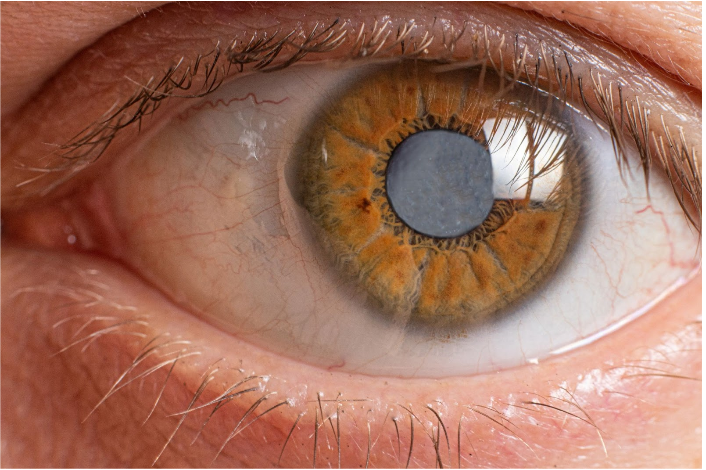
Cataracts are a common problem among older eye care patients. According to the National Eye Institute, more than half of all Americans age 80+ either have cataracts or have had surgery to remove cataracts. Together with macular degeneration, diabetic retinopathy, and glaucoma, cataracts are one of the leading causes of blindness or low vision in the United States.
What are cataracts?
Cataracts affect the normally clear lens of the eye, which sits directly behind the pupil. With cataracts, the lens becomes cloudy and vision becomes blurred. Also with cataracts, natural and artificial light may seem overly bright, patients may report seeing a "halo" around light sources, colors may look faded, and night vision may deteriorate.
What causes cataracts to develop?
Cataracts happen primarily as a result of normal aging. Around the age of 40, when many adults experience changes in their vision, the proteins in the lens of the eye undergo changes to their structure. This can cause areas of cloudiness that grow and become more obstructive over time.
Some cataracts are present at birth (congenital) or develop in early childhood; these may or may not affect normal vision. Others are caused by disease (such as diabetes) or trauma to the eye, including an accident or injury. In some cases, taking steroids can also cause cataracts.
How are cataracts diagnosed?
Cataracts are identified by an optometrist during a dilated eye exam, which typically includes the following tests:
- Visual acuity test to assess how clearly the patient can see, both up close and far away
- Visual field test to gauge peripheral (side) vision
- Slit lamp exam to magnify and spotlight different parts of the eye
- Retinal exam with mydriatics (dilation drops) to enlarge the pupil so the practitioner can get a better look
Cataract treatment and the importance of collaborative care
While it is possible to delay the development of cataracts by following a healthy diet and lifestyle, currently the only way to remove cataracts once they have developed is with surgery. (However, this may soon change thanks to a new scientific breakthrough.) Cataract surgery is an outpatient procedure performed by an ophthalmologist, during which the cataract is removed and most often replaced with an artificial lens.
Because optometrists are the first to test for and identify cataracts, they are the primary source of information for patients.
Once diagnosed, patients are likely to have questions about living with cataracts, what treatment options are available, and what to expect following surgery. For this reason, it is important for optometrists to stay up to date on the latest advancements in cataract care, including cutting-edge surgical technologies and post-surgery medication options. Doing so will allow them to better educate their patients and help prepare them for what comes next.
Optometrists should also be selective when it comes to choosing their surgical referral partners.
Whether they are just starting out or looking to expand their referral network, it is important for optometrists to choose the right ophthalmology partners. Not only should your goals align in terms of providing the best care, but the right partners will also be those who are continually updating their equipment and adopting new technologies.
Working together, optometrists and ophthalmologists can help make the patient journey as smooth as possible and ensure optimal health outcomes for their cataract patients.
Veatch has been helping doctors provide superior patient care for 30+ years.
Family owned and operated for over three decades, Veatch Ophthalmic Instruments delivers everything you need to serve your patients and run a thriving practice. Plus, as a company with "an eye for good service," our commitment to our customers does not end at the point of sale but extends for the life of your equipment. Contact us today to learn more.